How to clean a coffee maker – and why you shouldn't use vinegar
This is when and how to clean a coffee maker for the best-tasting brews, and why vinegar can damage your machine

Laura Honey
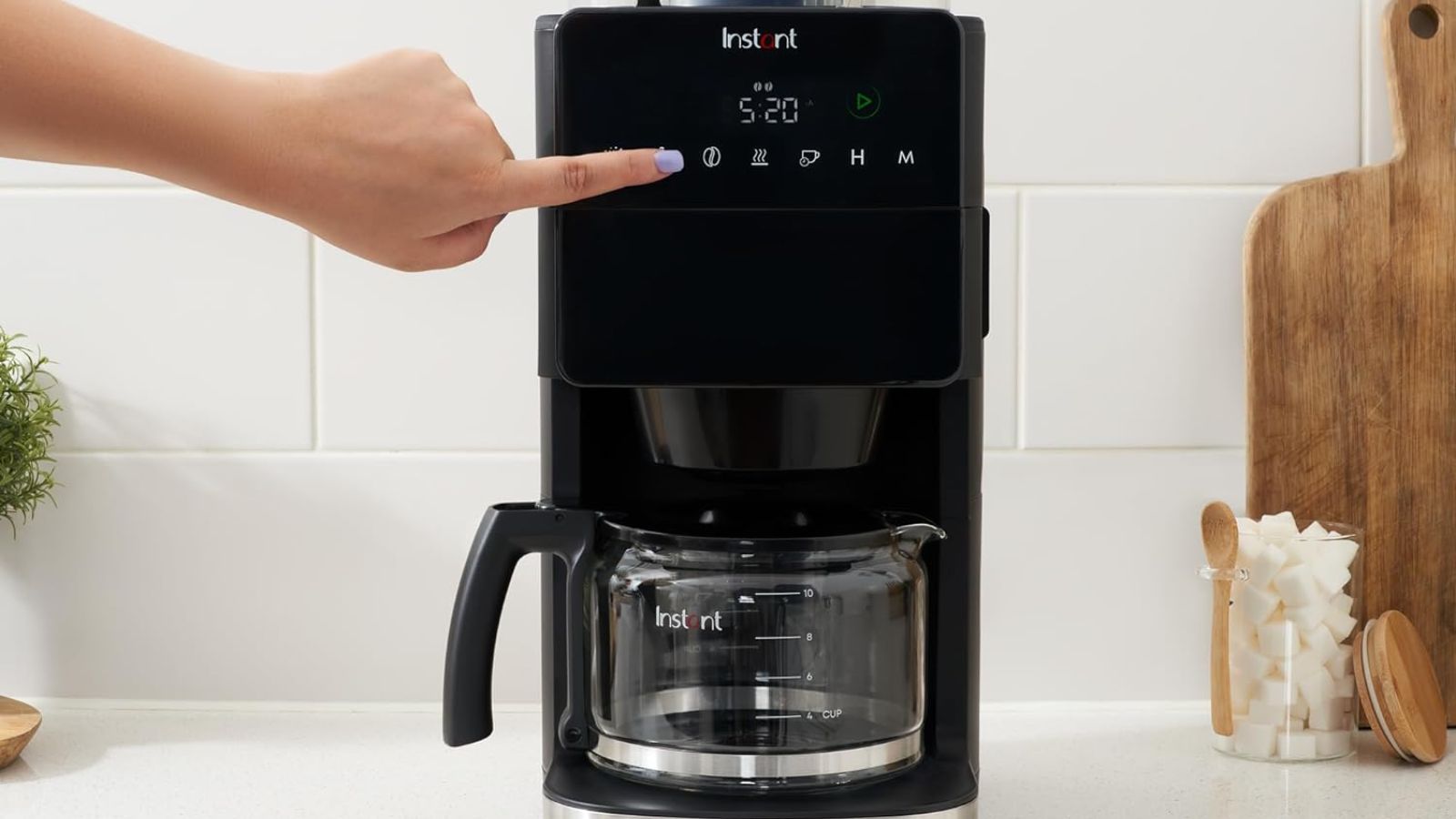
Knowing how to clean your coffee maker is crucial if you want to enjoy consistently delicious cups of coffee for years to come. It might not be glamorous, but it doesn't have to be hard. We asked experts for their coffee maker cleaning tips.
If you've invested in one of the best coffee makers on the market, you'll want to keep it fresh with regular making. That means ensuring there isn't any dust or fingerprint marks on the outside and that the inside isn't covered in scale and dried milk.
People always ask: can you clean a coffee maker with vinegar? The short answer is no, though there are elements of a coffee maker that can be refreshed with white vinegar. More on that, below.
How to clean a coffee maker

To ensure every cup tastes delicious, these tips from coffee experts reveal how to clean a coffee maker, be it a drip coffee machine, or a more intricate espresso maker. There is also advice on cleaning specific parts such as the water reservoir and pot. A morning coffee enjoyed with the weekend papers never tasted so good.
How to clean a coffee maker with vinegar
Many of us know that cleaning with vinegar can be really effective, but what might be fine for sinks and countertops is not always good for appliances. Most coffee brands, including Lavazza and Smeg, do not recommend cleaning your coffee maker with vinegar. In fact, doing so might well invalidate your guarantee.
Why shouldn't you clean a coffee maker with vinegar when every other website you visit is urging you to? Well, the strength of the acidity will rot the rubber seals and parts if you use vinegar regularly, which will, in the end, limit its life.
One area where you can use vinegar to clean a coffee maker is in the water reservoir. Joyce French, cleaning expert at HomeHow says: 'Some models with an integral reservoir can be cleaned by running white vinegar through the machine, then running water through to remove the remaining residue and vinegar.
Design expertise in your inbox – from inspiring decorating ideas and beautiful celebrity homes to practical gardening advice and shopping round-ups.
'Alternatively, lemon juice can work just as well for this.'
How to clean an espresso machine
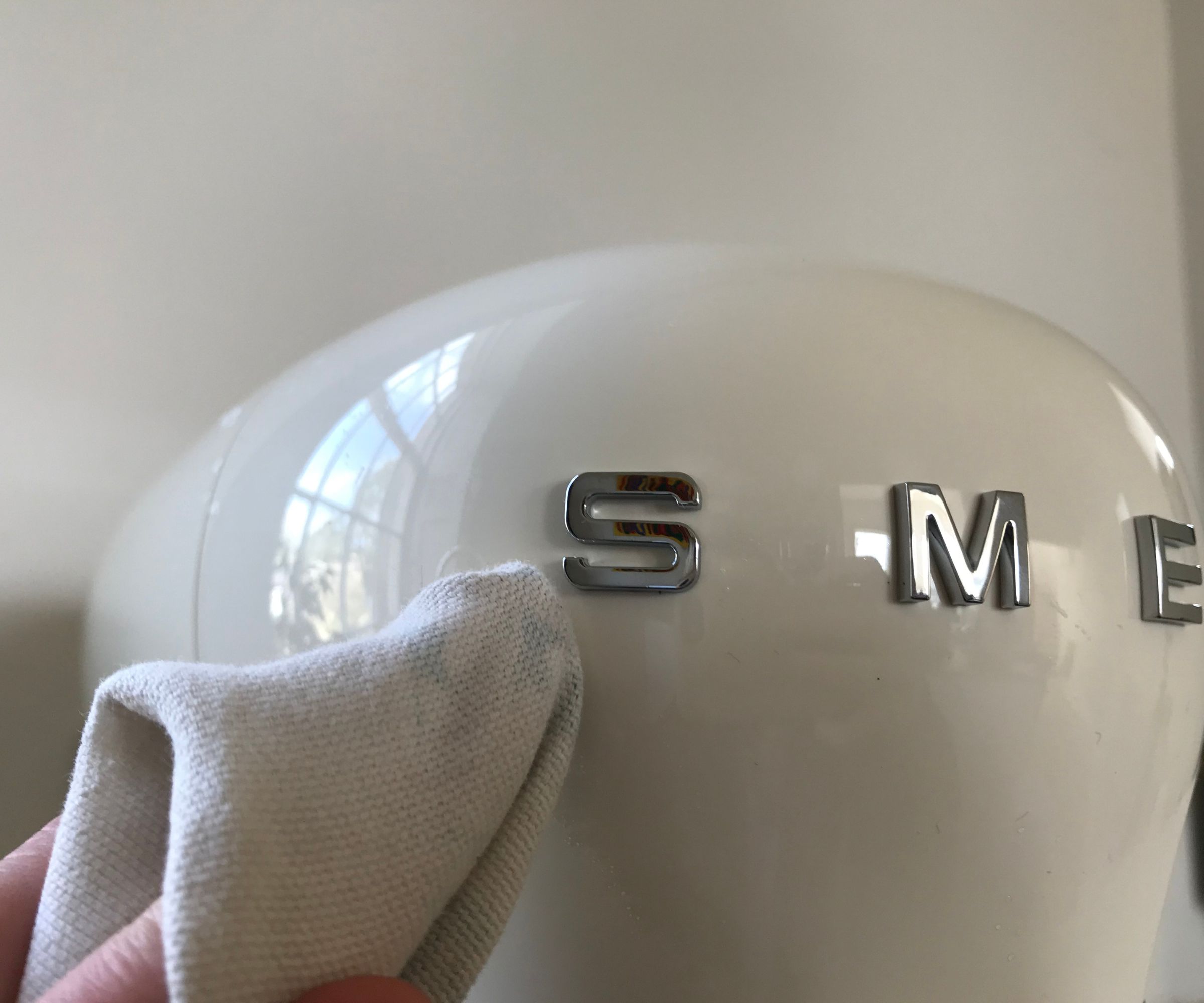
It should be relatively easy to clean an espresso machine.
'An espresso machine can be cleaned by simply running the portafilter under warm running water,' says Clare Edwards, Head of Consumer and Retail Events at Smeg. 'For a deeper clean. The filter can be soaked in a degreasing solution.'
Dave Cutler-Colclough, Coffee Specialist and Lavazza’s Brand Ambassador and Head of Training, breaks down the process. He explains: 'To clean an espresso machine you should use a stiff plastic brush. You should scrub around the shower screen and the rubber gasket in the group head.
'You can also use chemical powder specifically for espresso machines.'
How to clean an espresso machine with a chemical cleaner:
1. Place a small amount (1/2 tsp) of the chemical powder into a blank filter holder.
2. Insert into the group and flush the water for 10 seconds to build pressure and then release.
3. Repeat this three or four times to 'backflush' the machine.
4. Then, remove the handle and replace the blank filter with a regular one.
5. Insert into the group and run water through it for 10 seconds.
6. Repeat three or four times to rinse.
7. Separately in a small tub add hot water and ½ tsp of the chemical powder to soak the handle and filter basket
8. Remove all old coffee oils before rinsing thoroughly with clean water.
How to clean a drip coffee maker
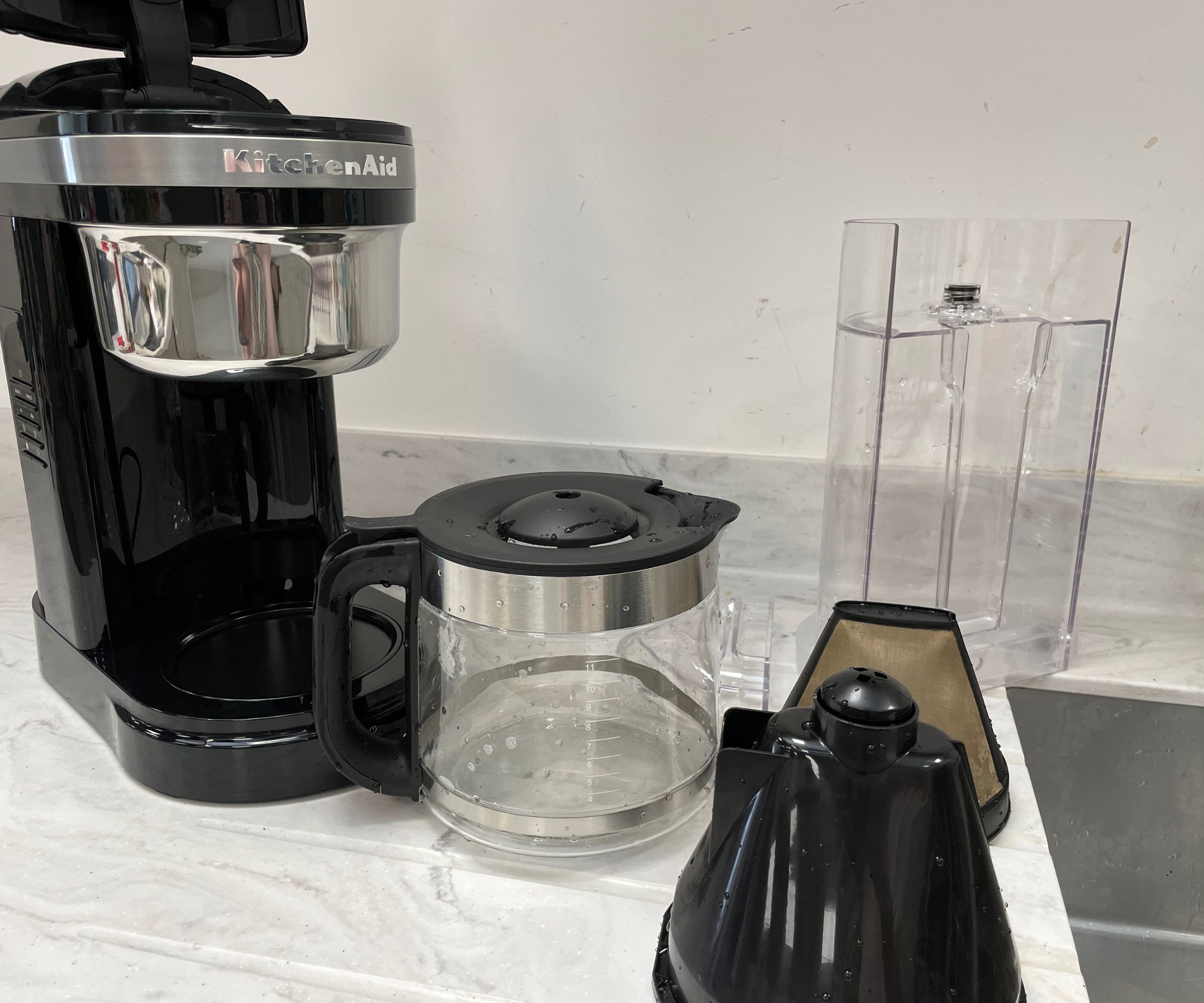
Drip coffee refers to coffee that has been made by putting coffee grounds into a filter, adding hot water to it and then collecting the coffee that drips out of the filter in the jug below.
Smeg's Clare Edwards comments: 'The drip filter can be easily cleaned by simply washing the removable parts in hot soapy water. This does not need to be done every time you use the machine.'
And Lavazza's Dave Cutler-Colclough agrees, adding: 'Clean the carafe or server using hot soapy water to remove coffee oils.'
How to clean a coffee pot
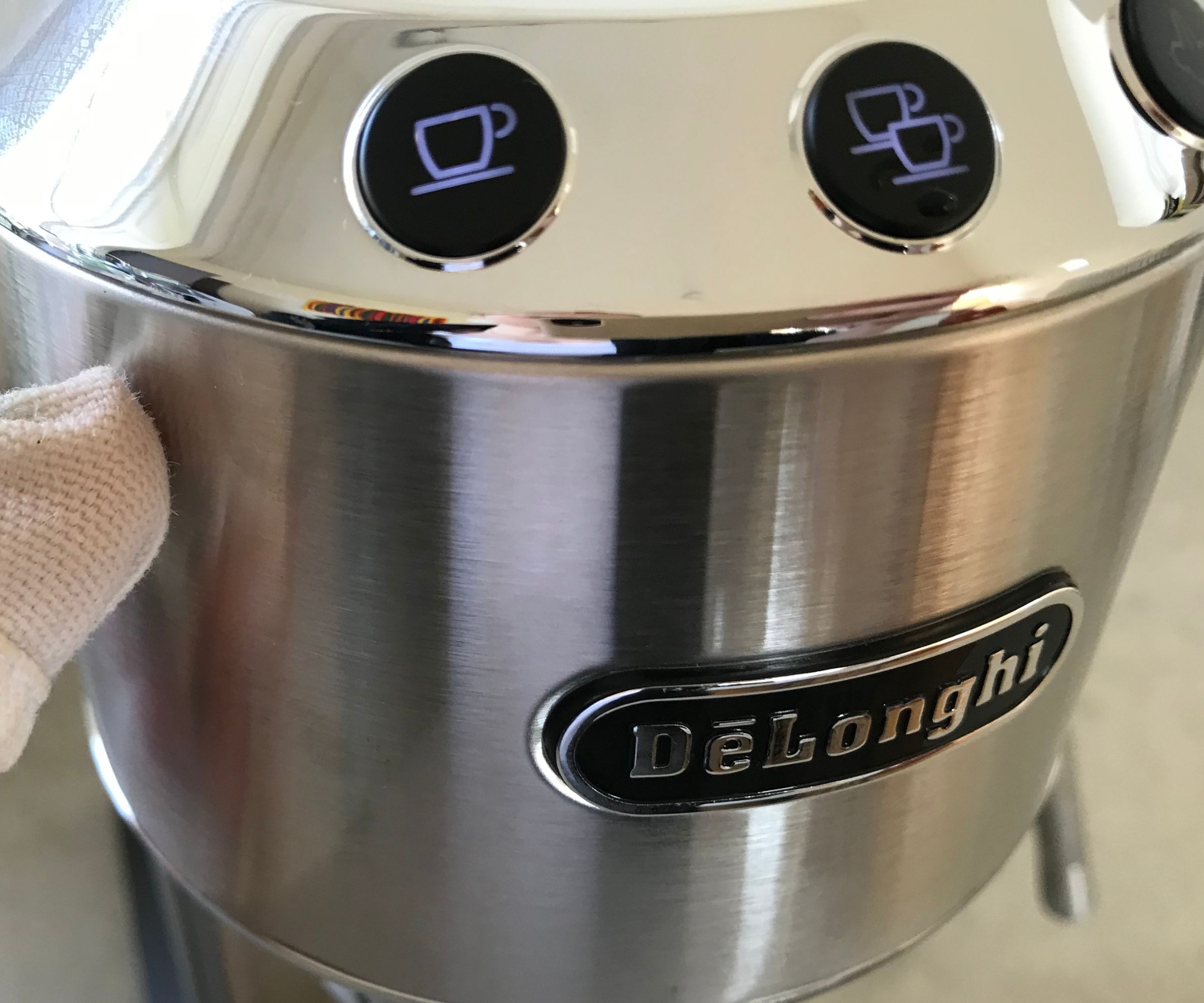
Dirty coffee pot? No problem. Lavazza's expert Dave Cutler-Colclough suggests that hot soapy water is all you need to clean your coffee pot, as the hot soapy water will remove coffee oils.
How to clean stainless steel coffee pots
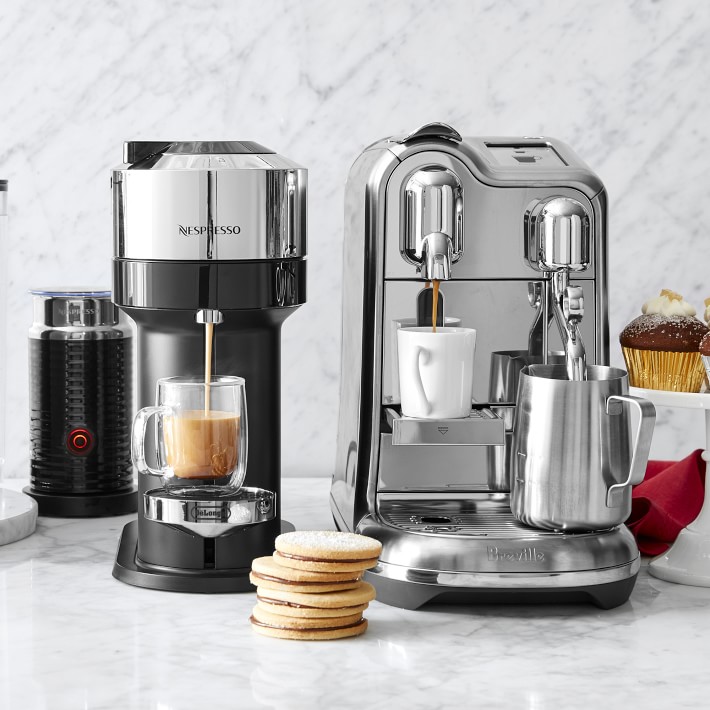
If your stainless steel coffee pot needs a little TLC, it's easy to bring it back to a sparkling finish.
'Most stainless steel coffee pots can be kept clean with regular washing in mild soapy water,' says Joyce French. 'Rinsing and leaving them to dry thoroughly should keep them in good condition.
'However, stains can build up from time to time. And there are several tried and tested methods of cleaning heavily stained coffee pots. You could add a little water to baking soda to make a paste and scrub it clean with a cloth. Alternatively, sprinkling a cupful of baking soda into the pot and adding boiling water will loosen the residue. You may need to leave it to work for around an hour. It’s best to avoid using metal or harsh scouring pads as these can cause damage.'
Joyce adds: 'Filling the pot with hot water and dissolving a dishwasher tablet is another good way of cleaning it.
'Before you try any of these cleaning methods, it’s a good idea to check the cleaning instructions that came with your pot. You should also check that your pot is made of stainless steel rather than aluminum or chrome as these cleaning methods won’t be suitable for use on all types of metal.'
How to clean a coffee machine water reservoir

The first thing you should do before you start cleaning the reservoir is to check your machine’s manual or the manufacturer’s website. There will be recommended cleaning instructions, which should explain how to clean the water reservoir. If there is a recommended method for cleaning, then you should follow this.
However, soapy water is always a reliable way to clean your coffee machine water reservoir.
Joyce French says: 'The water reservoir is a common part of a coffee machine that people neglect to clean. But the water reservoir can build-up with limescale and bacteria.
'Many modern machines come with a removable water reservoir that can be washed by hand or in the dishwasher.'
According to Clare Edwards of Smeg, the water filter 'can be washed with hot soapy water and rinsed' for a thorough clean.
Cleaning advice for specific coffee makers
If you want specifically tailored advice for how to clean your coffee maker, our experts have plenty of advice to give. Here are links for our specific buying guides:
- How to clean a coffee percolator
- How to clean a French press
- How to clean a Cuisinart coffee maker
- How to clean a Ninja coffee maker
- How to clean a Keurig coffee maker
- How to clean a steam wand
FAQs

How often should you clean your coffee machine?
'Cleaning your coffee maker depends on how much you use it, and the type of machine you are using,' says Smeg's Clare Edwards. 'The espresso and drip filter machines need less cleaning than the bean to cup machine. Due to the beans being ground within the machine of the bean to cup, the areas where the beans travel through the machine e.g. the brew unit and waste unit, should be cleaned daily.'
What's more, there are certain parts of a coffee machine that require more cleaning than others, says Joyce French, explaining: 'If you have a machine with a steamer, then it’s sensible to clean this after every use. Carefully blast a little steam through the spout and wipe over the arm with a clean cloth to prevent it clogging and building up with bacteria.
'Leftover coffee grinds from bean to cup, traditional espresso and drip filter coffee machines should be removed after use as leaving them will encourage mold to grow. Manufacturers often recommend rinsing coffee makers through with water after use and it’s also a good idea to rinse any removable filters to prevent them from clogging up too.
'Modern coffee makers such as single serve coffee makers and bean-to-cup machines usually have removable drip trays and baskets to help make cleaning easier. So, if you use your coffee maker every day, it’s a good idea to rinse or wash these daily to avoid spending time removing built-up dirt and stains.
'Descaling your coffee maker every three to four months should keep it limescale-free. However, if your water is very hard you may need to descale it every two to three months to stay on top of it.'
Finally, your coffee maker’s manual should have a section on cleaning and maintenance, which is always a good idea to follow to keep your appliance in good working order.
How do you know if your coffee maker needs descaling?
Depending on the manufacturer, some machines will have a warning light to alert you to the fact your coffee maker needs descaling. If yours does not come with this feature, there are a couple of things that could occur that may indicate that descaling is required.
'Signs that your coffee machine may need descaling include dripping or blocked outlets and white residue appearing on the surfaces,' says Joyce French. 'Other tell-tale signs may include unusual noises coming from your machine while you use it or the water not heating up as it should.
'However, there aren’t always obvious signs that it needs descaling. So, it’s a good idea to follow the manufacturer’s cleaning and maintenance guidelines. And to check what products it recommends using or avoiding, as some cleaning methods may not be suitable for your machine. Most models will have some descaling instructions, which should be followed to prolong the life of your machine.'
'Some coffee machine models will have a warning message, or a red or orange light that will alert you when it’s time for descaling. However, many don’t offer this handy function, so it can be useful to make a note in your calendar when it’s time for the next routine descale.'
What happens if you don't clean your coffee maker?
If you don't clean your coffee maker, coffee residue and limescale will build up inside it. Both will make your machine less efficient in terms of running – there are likely to be clogs – and the taste of your coffee will be affected, too.
How often should the milk wand be wiped?
The milk wand should be wiped each time you use the coffee maker with a clean, damp cloth that you use only for this job. The best way to wipe the milk wand clean is how they do it in coffee shops: by wrapping the damp cloth around the wand tightly, then twisting it before turning on the steamer (carefully) for a few seconds.
Next, learn how to spot the tell-tale signs of mold in your coffee maker, from unpleasant smells, to unusual tasting brews.
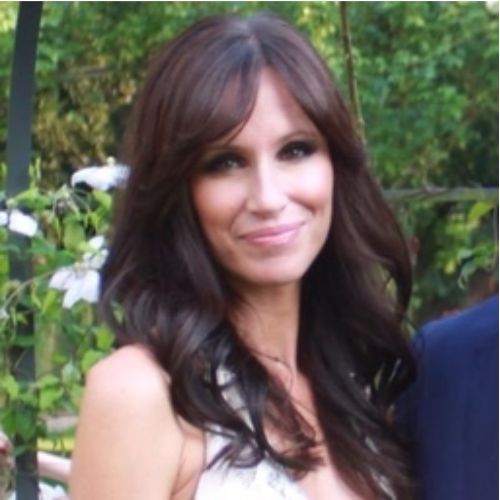
Ruth Doherty is an experienced digital writer and editor specializing in interiors, travel and lifestyle. With 20 years of writing for national sites under her belt, she’s worked for the likes of Livingetc.com, Standard, Ideal Home, Stylist and Marie Claire as well as Homes & Gardens.
- Laura HoneyeCommerce Editor